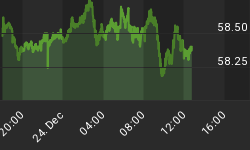Headline industrial production declined 0.1% in May as did the manufacturing component. Industrial production was constrained by Katrina-related interruptions last summer and then was boosted by post-Katrina-related rebuilding etc. My bet, based on the behavior of my pet leading indicators, the shape of the yield curve and real M2 growth, is that the year-over-year deceleration in industrial production growth registered in May (see Chart 1) is the beginning of a moderating trend. Keep an eye on the level of industrial production. A peak in the level usually signals a cyclical peak in the business cycle. It is too early to tell whether April marked the peak (also see Chart 1).
Chart 1
It appears as though the weakness in housing and consumer spending is beginning to show up in production, or lack thereof. Related to housing, production of appliances, furniture and carpeting was down 1.0%, the second consecutive monthly decline (See Chart 2). Also, production of construction supplies was down 0.6% in May following a relatively weak 0.4% April increase (see Chart 3). Turning to consumer goods less related to housing, automotive production was down 1.0% in May - its sixth decline in the past eight months (see Chart 4). And production of computers, video and audio equipment fell 1.3% in May, marking its fourth decline in the past five months (see Chart 5).
Chart 2
Chart 3
Chart 4
Chart 5
Initial Jobless Claims Fully Recovered From Puerto Rican Hangover
Several weeks ago, Puerto Rican municipal workers were temporarily laid off. They are back and so, too, is less noisy behavior of initial jobless claims. As shown in Chart 6, the year-over-year change in weekly initial jobless claims has been about a ten percent decline in each of the past two reported weeks. This actually suggests some strengthening in the demand for labor in early June (fewer applications for unemployment insurance) compared with the weakening exhibited in the April and May monthly employment reports.
Chart 6
A Gentler Ben?
Chairman Ben Bernanke gave a speech on energy and the economy today to the Economic Club of Chicago. Really, only one paragraph of it was relevant to the issue of the near-term course of Fed policy. That paragraph is reproduced below. I have italicized the sentence that suggests to me that Bernanke may have softened the views he expressed last week that shook up the markets. Bernanke gave no indication that a June 29 rate hike was off his "to do" list. But perhaps he is not as concerned about the medium term outlook for inflation as he conveyed last week.
"As I noted in remarks last week, although the rate of pass-through of higher energy and other commodity prices to core consumer price inflation appears to have remained relatively low in the current episode--reflecting the inflation-fighting credibility built by the Fed in recent decades the cumulative increases in energy and commodity prices have been large enough that they could account for some of the recent pickup in core inflation. In addition, some survey-based measures of longer-term inflation expectations have edged up, on net, in recent months, as has the compensation for inflation and inflation risk implied by yields on nominal and inflation-indexed government debt. As yet, these expectations measures have remained within the ranges in which they have fluctuated in recent years and inflation compensation implied by yields on government debt has fallen back somewhat in the past month. Nevertheless, these developments bear watching."
















